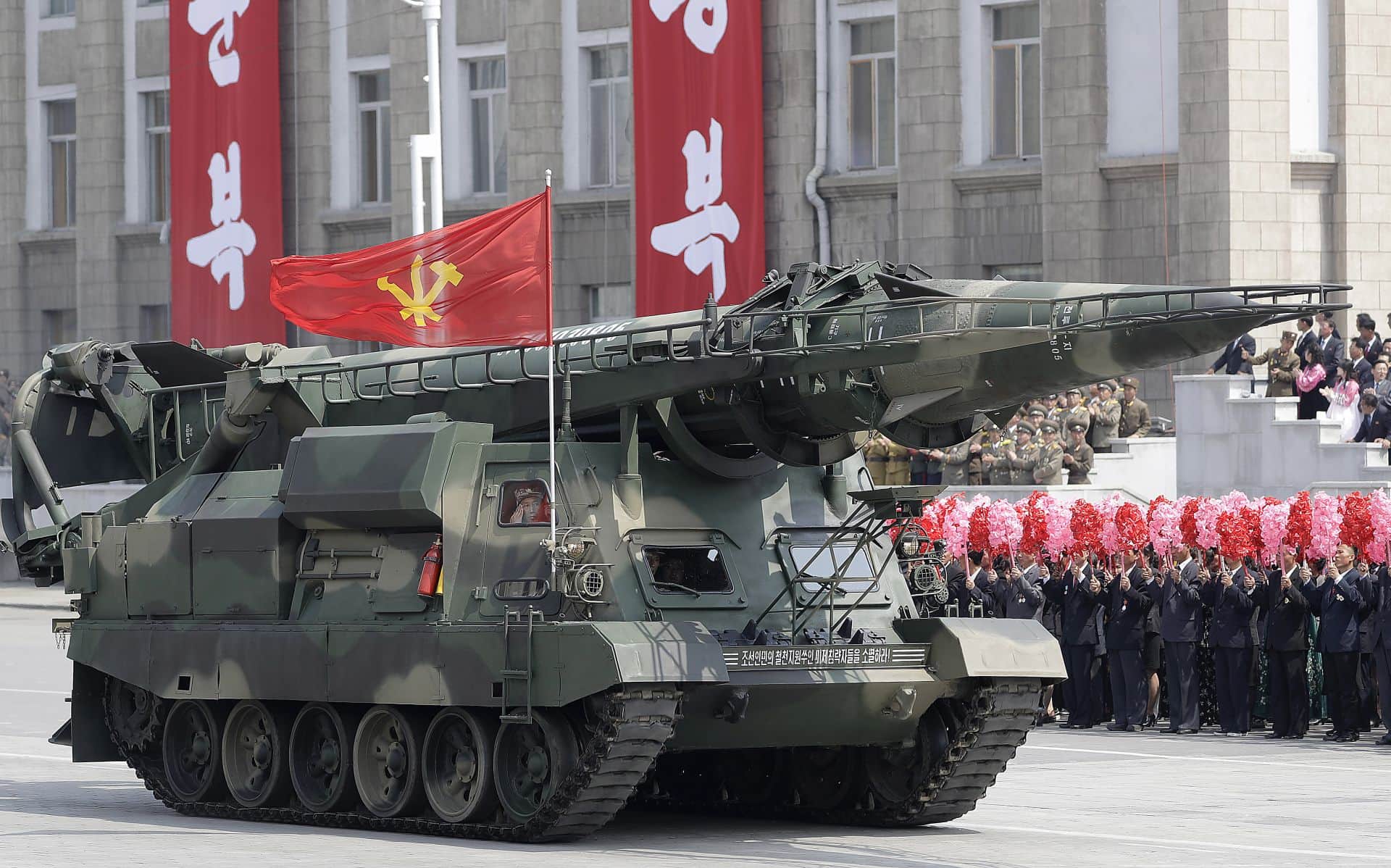North Korea’s latest missile launch represents a significant step forward in its weapons capabilities, analysts say, but Pyongyang could be looking to secure a position of strength before a return to the negotiating table.
The intermediate-range missile fired by the North over the weekend, named the Hwasong-12, was its longest-range rocket yet, analysts say.
It was its 10th launch this year, after dozens in 2016, as it accelerates efforts to develop an intercontinental ballistic missile (ICBM) capable of delivering a nuclear warhead to the continental United States — something President Donald Trump has vowed “won’t happen”.
Leader “Kim Jong-Un has stepped up testing compared to his father and grandfather, and it is starting to pay off,” Melissa Hanham of the Middlebury Institute of International Studies in California told AFP. “This is a clear indication of progress.”
Pyongyang has long had missiles that can reach targets across the South — the 500 kilometer Scud — and Japan, the 1,000-1,300 kilometer Rodong.
But with an imputed range of 4,500 kilometers the Hwasong-12 puts US bases on the Pacific island of Guam within reach.
More significantly, the new missile could be a stepping stone to a properly working ICBM — which would fundamentally change assessments of the threat posed by Pyongyang.
“This is not that missile but it might be a testbed, demonstrating technologies and systems to be used in future ICBMs,” wrote aerospace engineering specialist John Schilling, adding that it could represent the first two stages of such a device.
Pyongyang “may be closer to an operational ICBM than had been previously estimated,” he said on the respected 38 North website.
A functional ICBM would need a nuclear warhead that can be mounted on to a missile.
The North’s official Korean Central News Agency claimed the latest test had proved its guidance and re-entry technologies, and said the rocket was “capable of carrying a large-size heavy nuclear warhead.”
It was “plausible that they have made a compact warhead after five nuclear tests”, Hanham told AFP, but KCNA’s phrasing was “interesting but vague.”
“It’s really hard to take their claims seriously without verification from other governments,” she added.
The launch came just four days after the inauguration of South Korea’s new left-leaning President Moon Jae-In, who advocates reconciliation and dialogue with Pyongyang to curb its nuclear ambitions.
Moon was part of the South’s last liberal government nearly a decade ago, which pursued a “Sunshine policy” of engagement with the North, and declared at his swearing-in that he would go to Pyongyang “in the right circumstances.”
Instead, said Koo Kab-Woo of Seoul’s University of North Korean Studies, he had been posed “an extremely difficult question” by the launch.
“Under the current circumstances, it’s very hard” to hold any talks with the North, Koo said.
But the timing of the launch so close to Moon’s installation was largely coincidental, he said. “They are just going their way consistently towards the goal of attaining nuclear deterrence capability.”
Moon slammed the launch as a “reckless provocation” saying that dialogue would be possible “only if Pyongyang changes its behavior.”
The North “strongly wants to talk with Washington,” Koo said, as expressed by a senior North Korean official following a meeting with former US officials in Oslo, Norway.
That remark came just two weeks after US President Donald Trump said he would be “honored” to meet Kim, after their tit-for-tat saber-rattling raised tensions in the region.
Pyongyang insists it needs nuclear weapons to defend against the threat of invasion by the US, and shows no indication of any willingness to give them up, whatever concessions are offered.
The North’s young leader is more focused on presenting Pyongyang to Washington and Beijing as their equals, equipped with weapons as devastating as their own, said Choi Kang of the Asan Institute for Policy Studies in Seoul.
“The bigger you are, the bigger the advantage you will have over negotiations. Otherwise, you will be looked down on,” he told AFP.
“In the Kim Jong-Il era, North Korea launched missiles to get Washington’s attention,” he said. “But now it’s different.”










